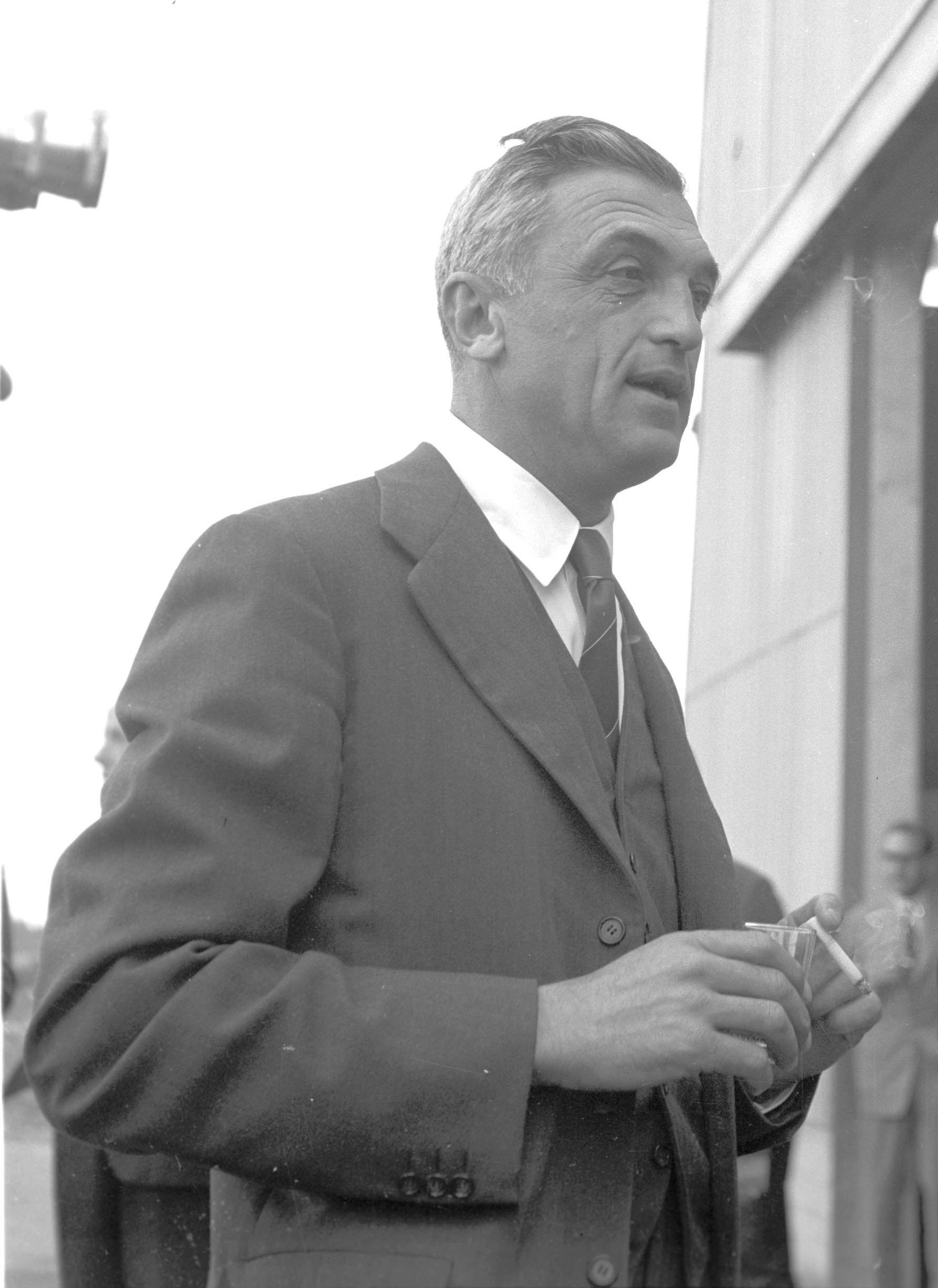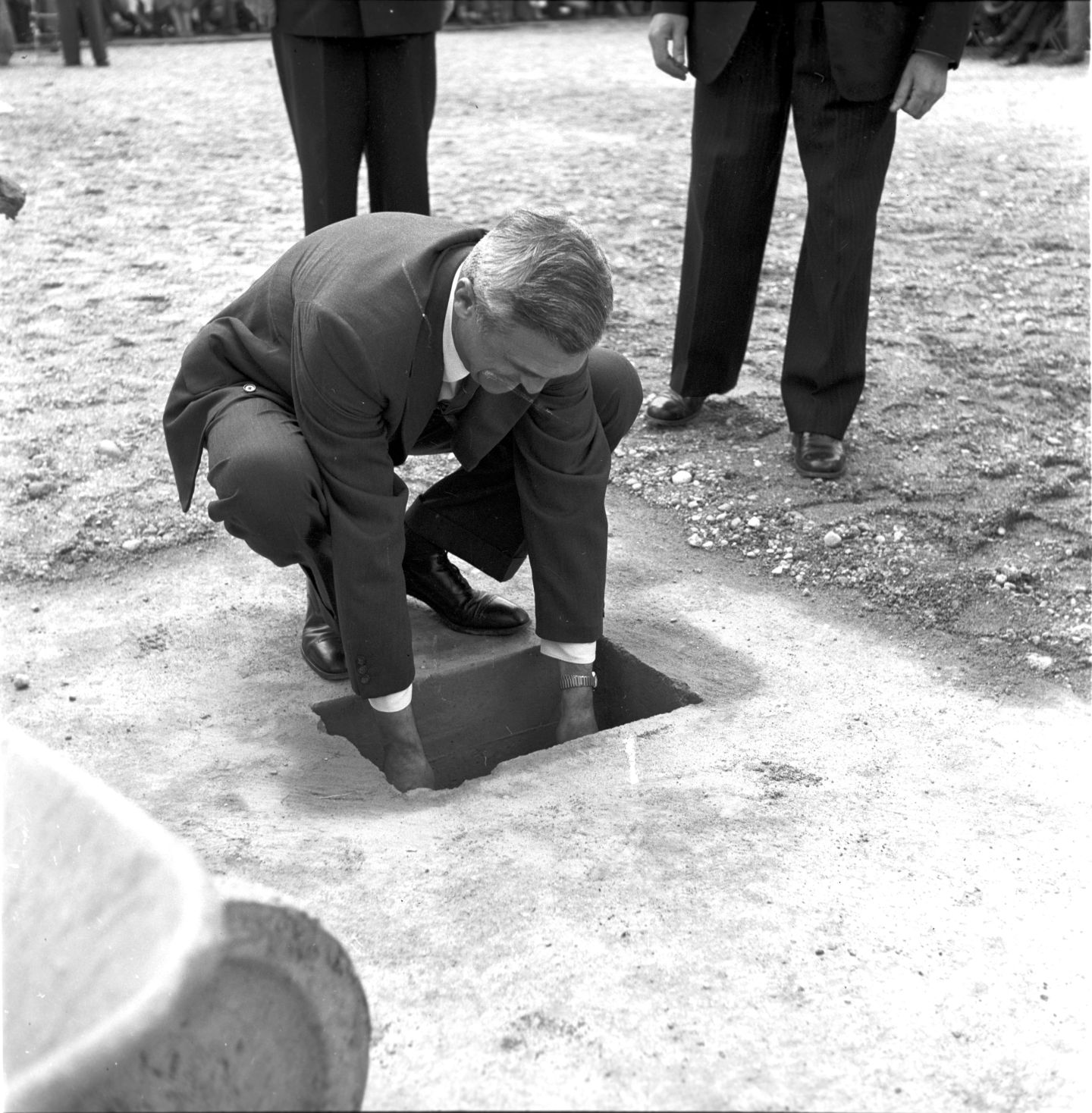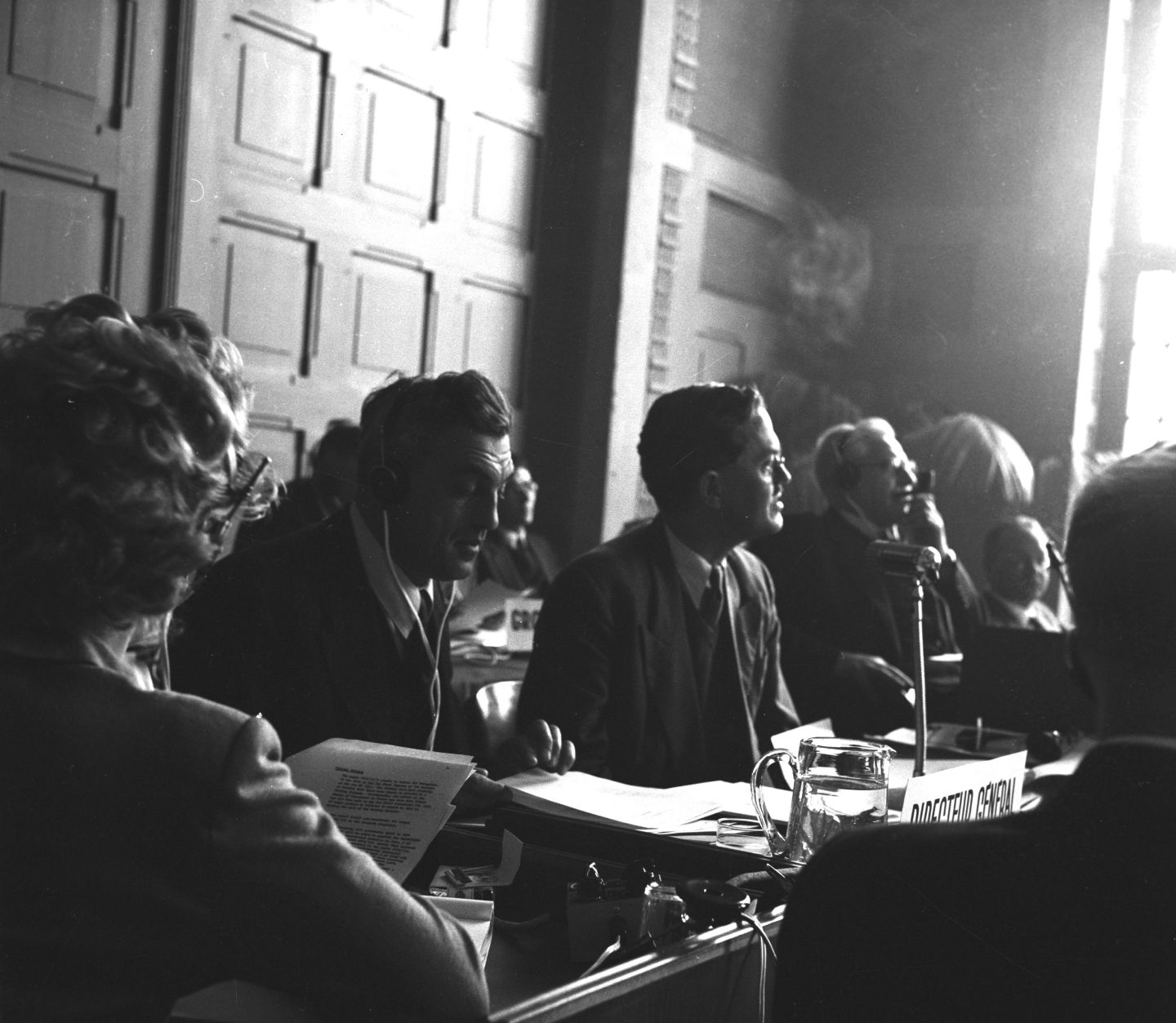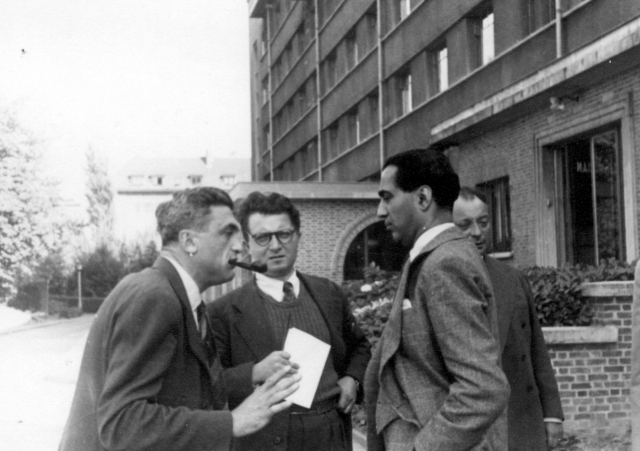Felix Bloch's Nobel Prize exhibited in the CERN Library
Felix Bloch (1905-1983)
Physicist, Nobel laureate, CERN’s first Director-General
In 2025, on the occasion of what would have been Felix Bloch’s 120th birthday, his family generously donated his Nobel Prize medal to CERN.
Introduction
Felix Bloch (1905-1983, Swiss-American), physicist and Nobel laureate, was CERN’s first Director-General, holding the position from 1954 to 1955. He is known for his work on nuclear induction, for which he was awarded the Nobel Prize in 1952 for the “development of new methods for nuclear magnetic precision measurements.” This work not only contributed significantly to the field of physics, but also revolutionised diagnostic medicine.
Early life
Bloch was born in 1905 in Zurich, Switzerland. In 1924, he entered the Federal Institute of Technology (ETH) in Zurich where he studied engineering for a year before changing to physics. In 1927, he went to Leipzig and became Werner Heisenberg’s first graduate student; his thesis, on the quantum mechanics of electrons in crystals, established the quantum theory of solids. After completing his PhD, he returned to ETH in 1928 for the academic year and worked on superconductivity with Wolfgang Pauli, then went to the Netherlands where he worked on spin waves and associated them with ferromagnetism. In 1930, he returned to Leipzig for the academic year and wrote his Habilitationsschrift (post-doctoral thesis) on the quantum theory of ferromagnetism and the thickness and structure of boundary walls (the “Bloch wall”), then went to Denmark and worked with Niels Bohr on the stopping power of matter for charged particles before returning in 1933 to Leipzig as a lecturer.
World War II
As a result of Hitler’s rise to power, Bloch left Germany in 1933. He went to Rome where he worked on electrical conductivity and magnetoresistance with Enrico Fermi, then in 1934 emigrated to the United States, accepting a position at Stanford University in California, United States. During this time, he began shifting his research from a theoretical focus to experimental physics. In 1940, he married physicist Lore C. Misch; the couple had four children.
Bloch later paused his research and teaching duties to work, during the summer of 1943, on the Manhattan Project under Robert Oppenheimer, where he worked on problems related to the implosion method for the atomic bomb. He left Los Alamos in the autumn of that year and joined Harvard University’s radar project, where he remained until 1945.
Nobel Prize
Following the war, Bloch returned to Stanford University and continued his work on nuclear induction, which earned him and Edward Mills Purcell the Nobel Prize in Physics in 1952. Their discovery led to the development of NMR spectroscopy for chemistry and the invention of the MRI, a medical diagnostic device that produces images of human tissue. MRIs are safer than CAT scans because they do not involve X-rays, and they produce more sophisticated images than had previously been possible.
Other Scientific Achievements
Additionally, he made many other influential contributions, including: Bloch’s theorem, which explains how electrons behave in crystalline solids and is central to solid-state physics and therefore has all kinds of applications in daily life; as well as the “Bloch sphere”, a visual aid that delineates the state of the qubit, a fundamental unit of information used in quantum computing.
In the late 1930s, he and Luis Alvarez used the 37-inch cyclotron at the University of California, Berkeley, to determine the magnetic moment of the neutron. In 1939, Bloch and other colleagues at Stanford were instrumental in building the university’s cyclotron.
In 1945, Bloch began research at Stanford that led to the discovery of nuclear induction, which allows physicists to measure the magnetic moments of nuclei.
CERN
A few years after being awarded the Nobel Prize, Bloch became CERN’s first Director-General, a position he held from October 1954 until August 1955. During his year as Director-General, Bloch achieved many milestones, including the creation of a cosmic ray experimental programme.
Bloch laying CERN's first stone, 10 June 1955, CERN Copyright
At the CERN Council’s second session on 24 February 1955, the governing body accepted Bloch’s resignation as Director-General, understanding that he had not anticipated having to sacrifice all of his scientific work for administrative tasks.
CERN’s Second Council Meeting, February 1955, CERN Copyright
CERN Secretary-General Edoardo Amaldi wrote of Bloch : “…apart from his outstanding scientific stature, Bloch’s human qualities made him particularly well suited for the job of Director General of the first multinational European Scientific Organization. Because of his warm personality, great simplicity and very pleasant ways, his relations – both with the staff and the representatives of the governments of the Member States – were easy and most cordial. Despite a short stay, he certainly assured CERN of a harmonious and dignified departure on its great voyage of discovery.”
Later Career
After CERN, Bloch returned once again to Stanford University, where he stayed for the remainder of his career. He died in 1983 in Zürich, Switzerland. Today, CERN has a road named in his honor.
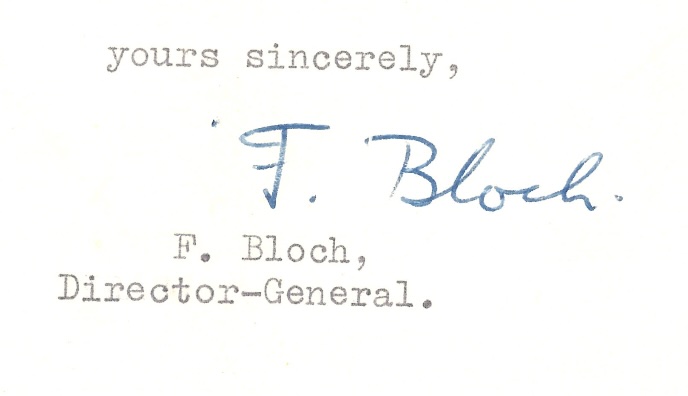
Bloch's signature, 12 November 1954, CERN Archives, CERN Copyright
Bloch & Pauli
It is a natural pairing to have the Nobel Prizes of Wolfgang Pauli and Felix Bloch exhibited here at CERN together.
As a young student, Bloch worked as Pauli’s assistant at ETH Zurich from 1928 to 1929.
Bloch & Pauli at Solvay Congress (right, slightly hidden), 1948, CERN Copyright
Their paths crossed after this, including at the Solvay Congress in 1948 (pictured above). Years later, Bloch attended the inauguration of the Pauli Room at CERN in 1960, where he is pictured below speaking with Pauli’s widow, Franca.
Bloch & Franca Pauli at CERN, April 1960, CERN Copyright
Sources
Abragam, A. "A virtuoso of quantum mechanics," August 1984. https://cds.cern.ch/record/104507/files/Bloch.pdf.
Amaldi, E. "Felix Bloch and CERN," August 1984. https://cds.cern.ch/record/104507/files/Bloch.pdf.
Bene, Enz, and Lenk. "The life and work of Felix Bloch," August 1984. https://cds.cern.ch/record/104507/files/Bloch.pdf.
Felix Bloch (1905-1983). n.d. ETH Zurich. Accessed 3 July 2025. https://library.ethz.ch/en/locations-and-media/platforms/short-portraits/bloch-felix-1905-1983.html.
Felix Bloch - Director-General (October 1954 - August 1955). Accessed 3 July 2025. https://home.cern/about/who-we-are/our-people/biographies/felix-bloch.
R. Hofstadter, "Felix Bloch Memoirs," National Academies Press, Vol 64, 1994. Accessed 2 August 2025. https://nap.nationalacademies.org/read/4547/chapter/3
Stanford University Libraries, Department of Special Collections and University Archives. Guide to the Felix Bloch Papers SC0303. Accessed 10 July 2025.
Wellisz, Christopher. "Felix Bloch, Nobel Laureate for Pioneer Work in Physics." New York Times, September 12, 1983.

